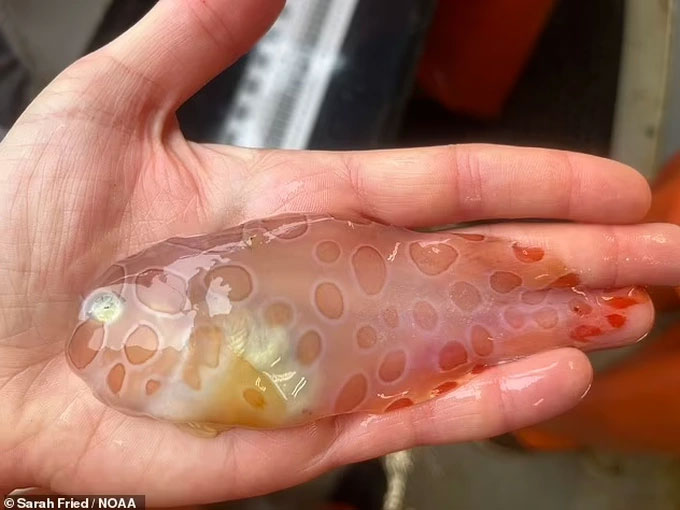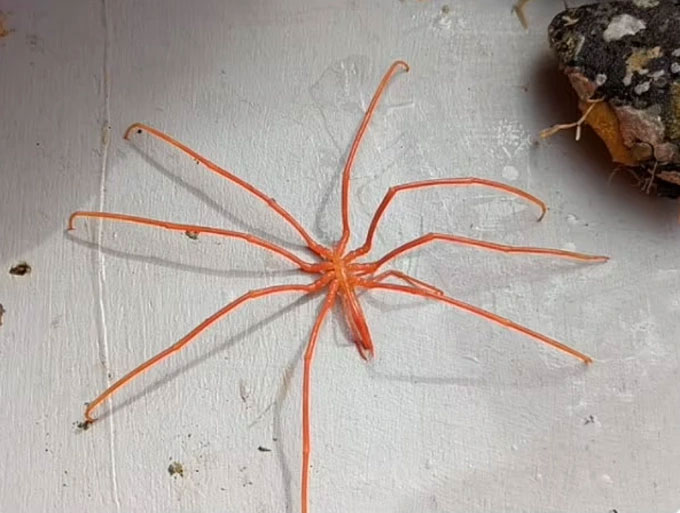A Fish Species with Unique Body Structure That Helps It Camouflage and Survive Effectively in the Deep Sea.
During a survey of the waters near the Aleutian Islands of Alaska, scientists accidentally discovered a strange creature belonging to the snailfish family, scientifically named Crystallichthys cyclospilus.

The transparent snailfish discovered by the National Oceanic and Atmospheric Administration (NOAA) (Photo: NOAA).
From the images captured by the National Oceanic and Atmospheric Administration (NOAA), the fish appears unusual with its transparent, firm body and a hint of reddish hue. This allows it to easily hide in the dark ocean depths, where sunlight rarely penetrates.
According to Sarah Friedman, a biologist at NOAA, this fish species is extremely rare, as they typically inhabit depths of about 100 to 200 meters. In fact, they are so seldom seen that there is very little information and imagery available in reference materials.
“Their transparent body with a hint of red is unique. This is an adaptation of deep-sea creatures like the snailfish for camouflage, based on the wavelength of light that penetrates through water,” Friedman shared.
“Red light has the shortest wavelength, meaning it never reaches the deeper waters and illuminates these fish. This makes them almost ‘invisible’ to predators,” she explained.
Friedman noted that the snailfish also has another interesting feature: it possesses suction cups on the underside of its body. This helps them easily cling to rocks and resist being swept away by strong currents. Thus, snailfish are among the few fish species with this structure.

A sea spider with an orange-yellow color and legs resembling stilts (Photo: NOAA).
During the ocean exploration, Friedman and her team also encountered many other unique creatures, notably a large, orange-yellow sea spider with legs that resemble stilts, known as Colossendeis.
This creature can grow up to 50 cm in length and lives at depths of 2 to 4 kilometers below sea level. The diet of the sea spider includes jelly, sea anemones, and other invertebrates.

















































